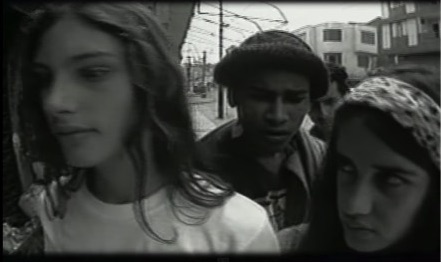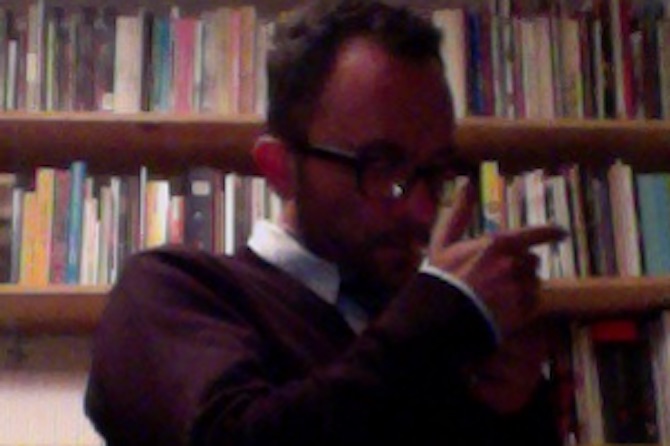Search
To search for an exact match, type the word or phrase you want in quotation marks.
A*DESK has been offering since 2002 contents about criticism and contemporary art. A*DESK has become consolidated thanks to all those who have believed in the project, all those who have followed us, debating, participating and collaborating. Many people have collaborated with A*DESK, and continue to do so. Their efforts, knowledge and belief in the project are what make it grow internationally. At A*DESK we have also generated work for over one hundred professionals in culture, from small collaborations with reviews and classes, to more prolonged and intense collaborations.
At A*DESK we believe in the need for free and universal access to culture and knowledge. We want to carry on being independent, remaining open to more ideas and opinions. If you believe in A*DESK, we need your backing to be able to continue. You can now participate in the project by supporting it. You can choose how much you want to contribute to the project.
You can decide how much you want to bring to the project.

During the decade of the 1990s, the city of Cali began to be perceived through a lens, the distortion of which still persists. The boom of the phenomenon of the narco-unit, along with the aesthetic conservatism, resulted in a crisis and an opportunity for the best contemporary artists of this city: they didn’t sell any work, but had ample time to experiment. One of the fields that benefitted most from this lack of interest of one the sectors acquiring the most art during this time was the production of works in video. We interview the researcher from Cali, Julián Montenegro, for whom it became necessary to extend the radar of his research, documenting the results of this phenomenon in a city quite distinct from that of Bogotá, complicating the socio-economic reading, without attributing all the good fortune of contemporary experimentation in Cali to any calculated disdain for less conventional formats.
Why did you concentrate your analysis on the decade of the 1990s ?
One could say it is during this decade that video art began to develop in Cali. Despite the fact there are some precedents of exhibitions and workshops realized in the city, the city was more characterised by developments in cinema (that made by the generation of Caliwood, with the directors Luis Ospina and Carlos Mayolo). Moreover during this decade the country suffered profound changes, such as the signing of a new constitutional charter, which resulted in the greater support of cultural development. Another important fact was the opening up of the economy initiated by the president César Gaviria, which enhanced the options for the average man in the street to acquire technology (before this, the elevated cost of video cameras made their purchase almost impossible).
But the boom of video art in Cali was not due solely to a series of political and economic factors: equipment could be acquired, but the market was not even slightly interested in sponsoring it, so what was the reason that it experienced such a strong impetus during this time?
There are several reasons, on the one hand, the school of Communication at the Universidad del Valle, opened up slots in local television, such as Rostros y rastros and Rayuela, that made it possible for communicators to see the possibilities of video within television, and how this could serve as a platform to show their works. On the other hand, local artists picked up on video as a possible way to record their actions.
During its twelve years of transmission, Rostros y rastros had a documentary focus, dealing with local issues, while at the same time enabling the appearance of new directors, who were creating new narratives, and generating all sorts of material. Their works were short experimental films, video art and documentaries.
Video art in Colombia didn’t receive any overt private support, so the first film-makers of Colombian video art took advantage of their professional ties to access free recording cameras and editing studios. Was it like this in Cali?
There something different happened. There were spaces within local television that were controlled by the School of Communication in the Universidad del Valle. This enabled students as well as people linked to the school to show their works and develop them with university equipment without any class of restrictions. These programmes in addition showed video experiments that other spaces wouldn’t admit.
Could one say the same of exhibition spaces? Did they also offer such sustained support to this type of production?
Yes. During this period various exhibitions were carried out in the city. What is more, in 1992, the Colombian-French Alliance realised the I Franco-Latin-American Festival of Video Art, where the works of international and international artists were shown. The Museo La Tertulia also made some shows where video was included, regularly bringing artists who were investigating in this area. At the end of the nineties, the local collective Helena Producciones, inaugurated the Performance Festival in Cali, opening up another space to show works in this technique.
What happened with the production of video art in Cali during the decades of 2000 and 2010, did it wane?
No. In fact artists such as Oscar Muñoz or Rosemberg Sandoval continued to work with video. Video additionally continues to be a platform used within local artistic production, despite the disappearance of programmes such as Rostros y rastros.
The exhibition of video art called Circuito cerrado was realised in public spaces in Cali in 1995, what was its most distinctive feature?
It was a piece made by Jorge Navas, at that time a student in the school of communication at the Universidad del Valle. It consisted of archive images broadcast on a circuit of televisions arranged along the Ortiz bridge in the city of Cali, while an artist developed a performance in front of the passers-by. A recording was made of this action that was later presented in Rostros y rastros.
In the generation that is closest to the end of your research you highlight the work of Carlos Moreno, Sofía Suárez and Jorge Navas. Could you tell us what these artists are doing now?
Sofía Suárez is linked to cultural management as the Artistic Director of the Film Festival of Cali. She also directs an arts faculty in the city. Carlos Moreno works in private television and in film, where he has directed projects such as Perro come perro. Jorge Navas is also linked to television and film, directing films such as La sangre y la lluvia, as well as working in advertising, as a director of commercials.
They have all successfully integrated into traditional forms within the institution. As in other contexts, you found one of the favourite working methodologies of local performers to be that of using this technique to record their actions. Did you find any other relation between these artists and video?
Initially video was used solely to record actions carried out by artists. However, this opened up the possibility for the recordings not to be limited to this, so much as video could be become a piece of work. In this way artists such as Rosemberg Sandoval decided the recording of an action was as important as the actual action. On the other hand video enabled the action not to have a specific time or place, it could be broadcast and occur in different moments and times.
From your overview which pieces would you highlight and why?
Calicalabozo, made by Jorge Navas as part of his degree thesis. In it he explored the possibilities of video within an imaginary premises, reviving moments from the Caliwood era, through the gaze of Andrés Caicedo, a writer who became a cult figure in the city. Apart from what was shown in the programme Rostros y rastros, there were also outstanding directors such as Carlos Moreno, Luis Ospina, Oscar Campo and Antonio Dorado. Artists such as Wilson Díaz and Juan Mejía who explored this format, coming to realize pieces such as Saltando Matones, also stand out in this decade. There are also the recordings of Rosemberg Sandobal’s the actions, who decided to go back to them, producing them in the decade of 2000, based on the actions originating in the nineties.

Psychologist and critic located in Bogotá. He also exercises as an independent curator through the self-run trademark Reemplaz0. A full time teacher with a flexible timetable, he habitually writes in the Colombian contemporary art blogs esferapublica and sablazo
"A desk is a dangerous place from which to watch the world" (John Le Carré)